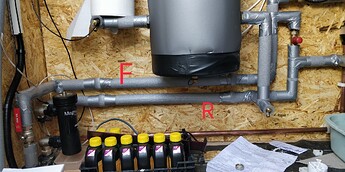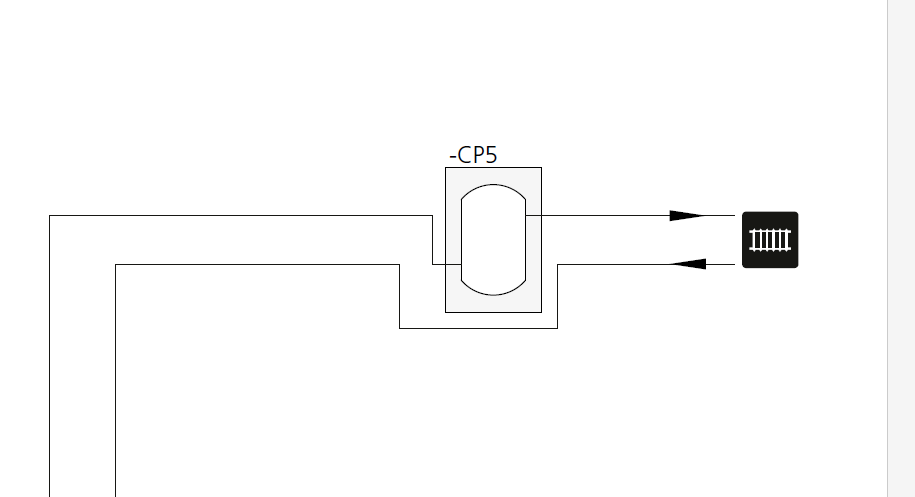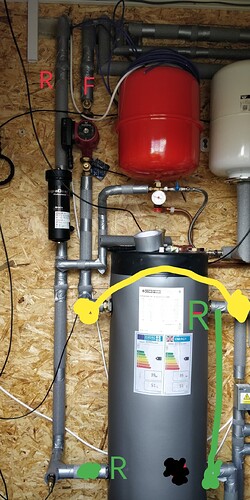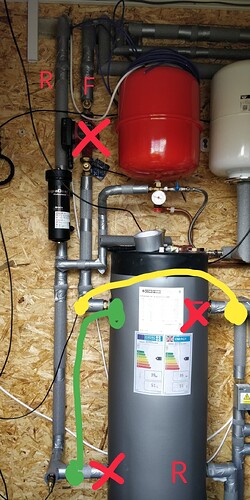Good afternoon,
I have been on the fence for getting a heat pump monitoring system installed for a while - to get the full pre-configured bundle is close to £1k.
I have a Grant Aerona 3 17kW heat pump, while this is working in as much as the house is warmer than when using the old gas boiler I think there are more efficiencies to be had. I have already enabled weather compensation which reduced consumption without affecting comfort, but I have no way to monitor further changes effectively. I know I need to improve the external pipe insulation, the fitters only used the normal Armaflex, not the outdoor rated stuff. The system is filled with water only, no glycol or inhibitor.
I have a heating company coming next month to replace radiators that I know are undersized and while they are here I would like them to fit other kit in the plant room while the system is drained down:
- heat meter
- air separator
- flush & fill valve (with flow meter)
- mesh strainer
Before I commit to a purchase of items, I would appreciate some feedback on the intended placement and use.
The heat meter I am looking at is the Kamstrup 403 q3.5. This will be installed on the return pipe between HP Mag Filter and buffer tank between 2x ball isolation valves. The instructions don’t state clear space either side of the heat meter so I am assuming 300mm either side (taking the 5x pipe diameter value from the flush & fill valve instructions).
I want to also install a mesh filter to complement the Mag Filter - is this appropriate or overkill given I’ve got the Mag Filter? Or will it negatively affect flow when in normal use (filter cleaned regularly). If it is to be installed should it go before or after the Heat Meter on the return pipe between the isolation valves? I am considering the 28mm Altecnic 400 mesh filter.
The air separator will be installed on the flow from the heat pump before the buffer. I am considering close to where the Mag Filter is located in the corner.
For the Flush and fill valve:
- instructions state 300mm straight pipe upstream of the valve (I assume here direction of water flow)
- should it be on the heating flow from buffer or return to buffer?
- if on heating flow I’ll have to get the pump lowered to fit the valve on the outlet side of pump
- if on heating return it’ll go beneath the Mag Filter and tee to the expansion vessel
- This is being fitted to confirm matched (or close to) flow rates for the HP side and heating side of the buffer.
OEM Kit considerations:
I already have an emonPi in the garage (currently monitoring solar & grid), a emonTX v4 alongside (monitoring EV charge points & battery) and another emonTX v4 in the plant room (monitoring ASHP and Mixergy cylinder via CT clamps).
To avoid spending extra on the full monitoring bundle or buying an additional emonBase I am considering:
Moving EmonPi from garage to plant room:
- connect ModBus USB for electric meters (2x or 3x SD120 ModBus meters)
- connect mbus usb for heat meter
- 2 spare CT Clamps to then be used to monitor individual live cables so I can separate out usage figures for controls from “in use” consumption
Move emonTX v4 (Wi-Fi) from Plant Room to Garage:
- CT clamp to solar
- CT clamp to Grid
- CT clamp to PowerWalls (2x live passing through single CT)
Existing emonTX v4 - need to buy Wi-Fi module for it): - CT clamp to Zappi 1
- CT clamp to Zappi 2
- CT clamp to Ohme
- CT clamp to Wallbox
What would be involved in changing sensors around in my emonPi config / local emonCMS so I don’t lose historic data? Backups will be taken before hand!
Thanks,
Colin





